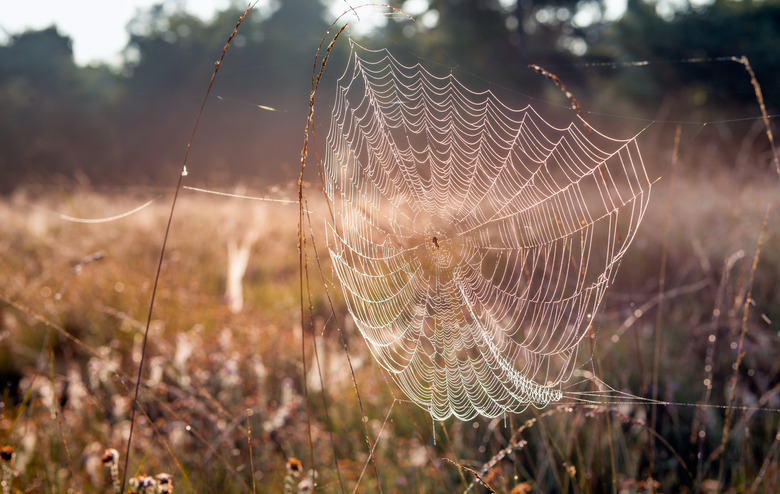What Is Innate And Learned Animal Behavior?
Animal behavior is what animals do or avoid doing. The difference between an innate behavior and a learned one is that innate behaviors are those an animal will engage in from birth without any intervention. Learned behavior is something an animal discovers through trial, error and observation. Most learned behavior comes from the teaching of the animal's parent or through experimentation with its environment.
TL;DR (Too Long; Didn't Read)
Innate behaviors are ones the animal is born with — they're essentially hard-wired into the animal's DNA. Learned behaviors are just that — learned — and animals will acquire them throughout life.
Innate Behavior
Innate Behavior
Instinct is a powerful force in the animal world. It dictates the behaviors necessary for survival, especially in species that don't get much guidance from their parents. These behaviors are programmed into an animal at a genetic level. An innate behavior is inheritable, passing from generation to generation through genes. It is also intrinsic, meaning that even an animal raised in isolation will perform the behavior, and stereotypic, meaning that it is done the same way every time. Innate behaviors are also inflexible and are not modified by experience. Finally, they are consummate, which means that the behavior is fully developed from the animal's birth.
Example of Innate Behavior
Example of Innate Behavior
Sea turtle hatchlings provide one of the best examples of innate behavior. They hatch never having seen their parents, so there is no opportunity for acquiring learned behavior. Yet, sea turtle hatchlings instinctively dig their way out of the buried hatchery. Even though this digging can take days, the hatchlings time themselves so that they emerge at night, when they are safest as they struggle toward the sea. There is no parent present to tell them they must wait for nightfall or that they must get to the sea. It is simply an innate knowledge, an instinct that drives them to action.
Learned Behaviors
Learned Behaviors
Learned behaviors come from experience and are not present in an animal at its birth. Through trial and error, memories of past experiences and observations of others, animals learn to perform certain tasks. Generally, learned behaviors are not inheritable and must be taught to or learned by each individual. They are extrinsic, meaning they don't occur in animals kept isolated from others or away from the opportunity for trial and error. They are permutable, meaning that they can change over time, in contrast to the rigid repetition of an innate behavior. Learned behaviors can also be adapted to suit changing conditions, and they are progressive, meaning the behavior can be refined through practice.
Example of Learned Behavior
Example of Learned Behavior
Honeybees provide an interesting example of learned behavior. While the desire to find nectar is innate in a honeybee, they learn to associate given colors with the food they're seeking. In experiments reported by North Carolina State University, sugar water was put in a yellow dish, while regular water was put in a blue dish. The honeybees learned that the yellow dish contained food and visited it while ignoring the blue dish, even when the positions of the dishes were changed. When regular water was put in the yellow dish and sugar water in the blue dish, however, the honeybees continued to visit the yellow dish until they learned through trial and error that what they wanted was now in the blue dish.
Complex Behavior
Complex Behavior
Behavior is actually more complicated than "innate" or "learned." Most behaviors are a mix of the two, neither completely innate nor entirely learned. For instance, some innate behaviors — such as flying in insects — can be perfected over time and through experience. Locusts know how to fly from birth, but they get better at it with practice, eventually learning to expend less energy to accomplish the same flight. The same is certainly true of foals, born with the knowledge of how to walk; it still takes time for the foal to learn how to operate its legs.
Cite This Article
MLA
Sipe, Marion. "What Is Innate And Learned Animal Behavior?" sciencing.com, https://www.sciencing.com/innate-learned-animal-behavior-6668264/. 24 April 2018.
APA
Sipe, Marion. (2018, April 24). What Is Innate And Learned Animal Behavior?. sciencing.com. Retrieved from https://www.sciencing.com/innate-learned-animal-behavior-6668264/
Chicago
Sipe, Marion. What Is Innate And Learned Animal Behavior? last modified March 24, 2022. https://www.sciencing.com/innate-learned-animal-behavior-6668264/
